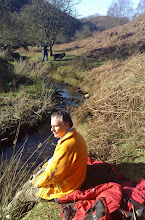Meter in poetry is basically the rhythmic structure of a verse. There are recurring patterns of stressed (assented, or long) and unstressed (unaccented or short) syllables. There are six basic types of meter in poetry most commonly used. They are the following: Iambic, Trochaic, Anapestic, Dactylic, Spondee, and Pyrrhic.
Iambic Meter:
The foot of the verse starts with an unaccented and ends with an accented stressed syllable.
Trochaic Meter:
It is the opposite of Iambic meter form in that it begins with an accented stressed then follows with an unaccented syllable.
Anapestic Meter:
The foot of the verse has two unaccented syllable and then followed by one accented syllables.
Dactylic:
The foot of the verse has one accented syllable which is followed by two unaccented syllables.
Spondee Meter:
The foot of the poem includes two accented stressed syllables.
Pyrrhic Meter:
A foot of a poem includes two unaccented syllables to help vary the use of rhythm.
Rhyme in Poetry
The basic meaning of rhyme is two words that sound alike. Rhyming in poetry is the most recognized and conventional tool in poetry. Rhyme helps fuse a poem. Today, conventional poetry aren’t as strictly determined as they were during the English Renaissance or in 18th century literature. Rhyme can help indicate a poetic theme and help to structure a subject that would otherwise seem disorganized. Meter plays a large role in this with rhyme.
There is internal rhyme within a line of poetry and then the more commonly known form is end rhyme which occurs at the end of the line and at the end of another line within the stanza of the poem.

i shared this in my google reader/profile because you compiled a nice resource :)
ReplyDelete